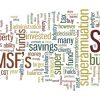In July this year, for the first time in five years, the cap on concessional super contributions will rise. This means that those under 50 to boost their super savings by an extra $5,000 per year.
Concessional contributions include contributions made from pre-tax income and are made either by yourself or your employer. They include:
Concessional contributions attract a contributions tax of 15% as they enter the fund ” as opposed to your marginal rate of tax which could be as high as 46.5% ” hence the term ˜concessional™.
There is a limit on the amount of concessional contributions you can make per year and this cap will rise from $25,000 to $30,000 from 1 July 2014, while the cap for those aged 50 to 59 will increase to $35,000, bringing it in line with the cap for over 60s.
What happens if you exceed your cap?
Contributions you make over the concessional cap are taxed at 31.5%, when 15% contribution tax has already been applied and a hefty 46.5% for excessive non-concessional or after tax contributions. That means you™ll lose close to half of what you contributed in penalties if you exceed your cap!
Non-concessional contributions cap
Non-concessional contributions include personal contributions for which you do not claim an income tax deduction.
For the 2014/15 year, the non-concessional contributions cap has increased to $180,000 “ up from $150,000.
Non-concessional bring-forward cap
People aged less than 65 years on 1 July in a financial year may be able to make non-concessional contributions of up to three times their non-concessional contributions cap over a three year period “ this is known as the ˜bring forward™ rule. The bring-forward non-concessional cap has increased to $540,000, up from $450,000.
The bring-forward cap is three times the non-concessional contributions cap of the first year. If you brought forward your contributions in 2014/15, it would be 3 x $180,000 = $540,000.
This consequential change to the non-concessional contributions cap means you can put more into super.
To maximise non-concessional contributions you may consider the strategy of making $150,000 contributions in 2013/14 and $540,000 of contributions after 1 July 2014. Care should be taken however, to ensure that the $150,000 cap in this financial year is not accidentally exceeded, triggering the ˜bring forward™ provisions as the consequences can be serious.
Increases to the concessional contributions cap and the non-concessional contributions cap from 1 July 2014 are a welcome development. You may wish to consider increasing salary sacrifice arrangements for 2014/15 to take advantage of the newly indexed $30,000 concessional contributions cap ($35,000 for those now aged 49 and above).
What are the caps going forward?
Concessional Contributions Caps
| Income Year | Under 50 | 50 to 59 years | 60 and over |
|---|---|---|---|
| 2014/2015 | $30,000 | $35,000 | $35,000 |
| 2013/2014 | $25,000 | $25,000 | $35,000 |
| 2012/2013 | $25,000 | $25,000 | $25,000 |
Non-Concessional Contributions Caps
| Income Year | Cap | Bring Forward Rule |
|---|---|---|
| 2014/2015 | $180,000 | $540,000 |
| 2013/2014 | $150,000 | $450,000 |
| 2012/2013 | $150,000 | $450,000 |














